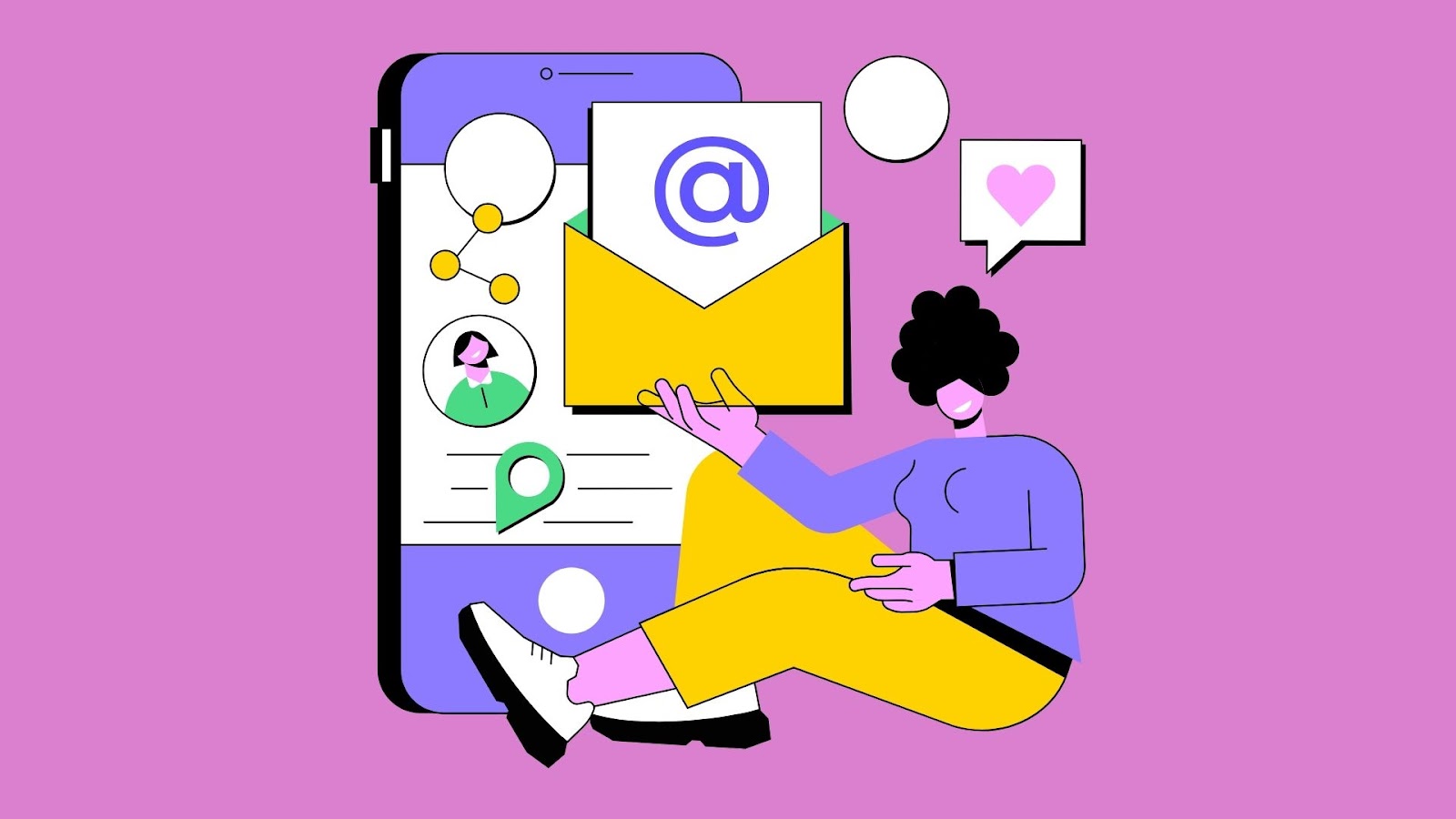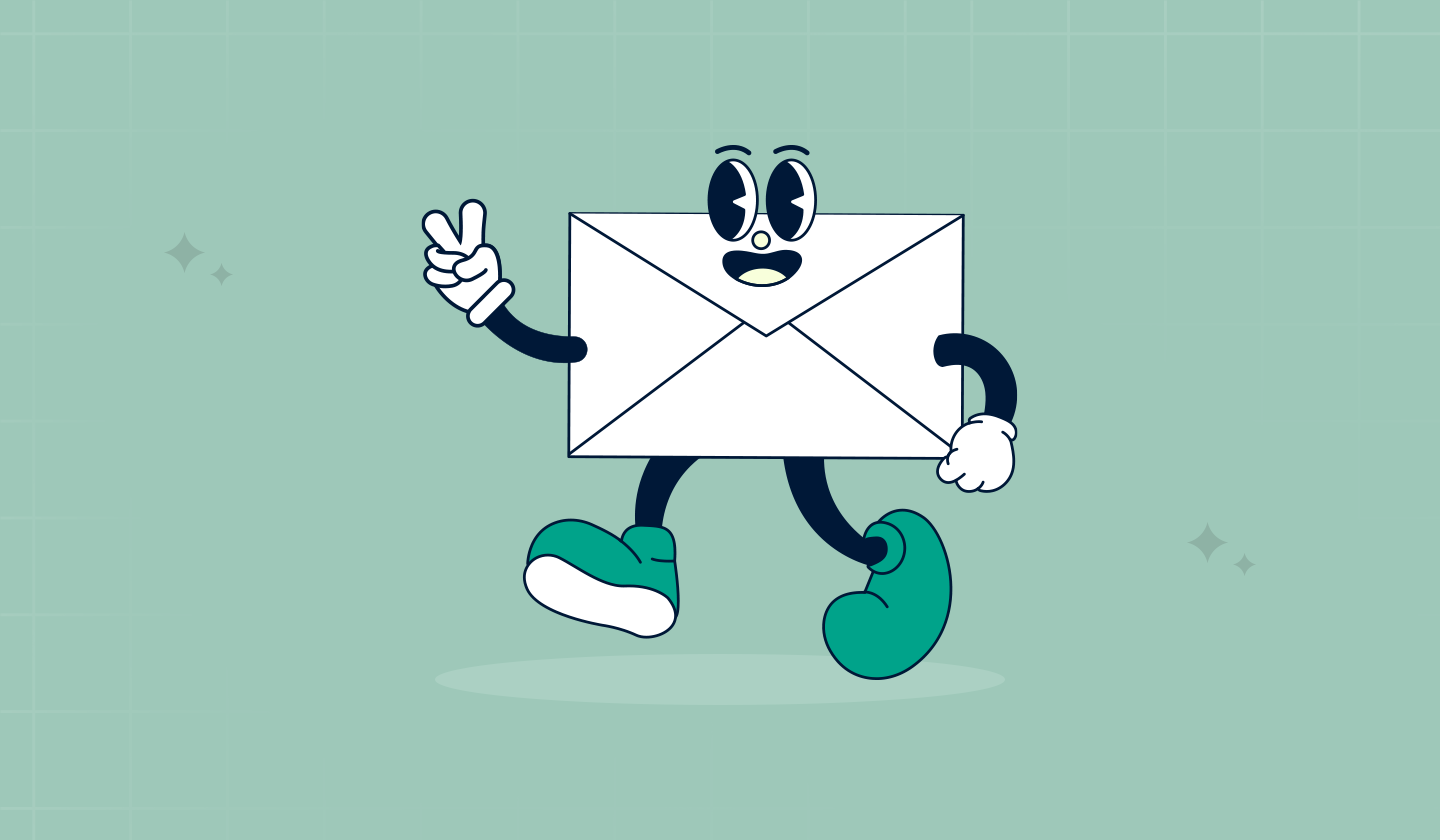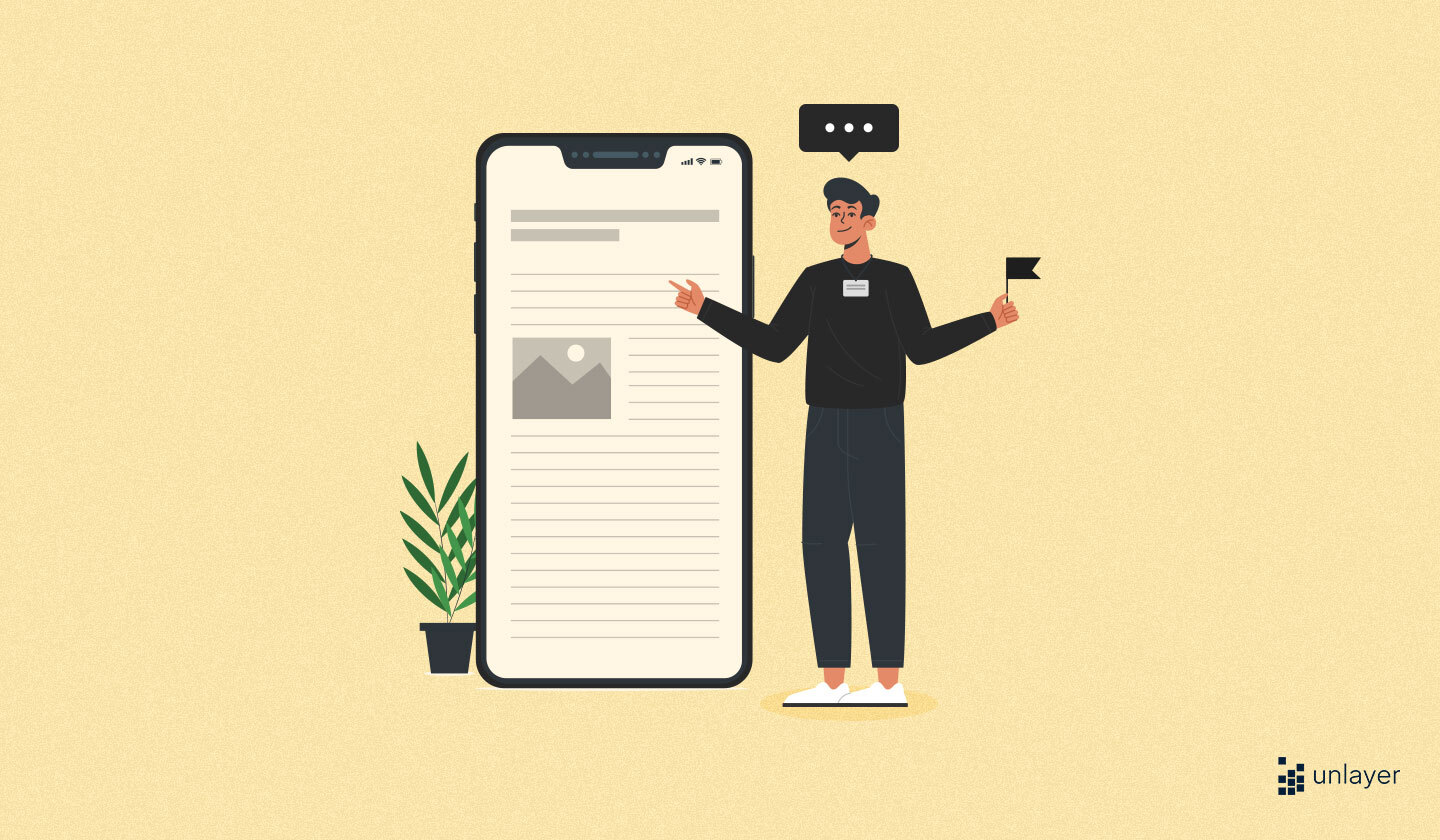Email marketing is an efficient way to hold on to your users, but it's not always the easiest to get started. That's where email marketing software comes in.
With several features that may assist you in developing strong customer relationships, it allows you to design emails, send personalized campaigns, automate email sending and track real-time analytics.
However, there are many different kinds of software, and it can be challenging to decide which one works best for you. Here are some of the vital email marketing software features you should consider before making a decision.
Key takeaways:
Email marketing software is essential for running efficient, scalable campaigns that engage customers and boost conversions.
Must-have features include AI capabilities, segmentation, drag-and-drop editing, personalization, automation, reporting, scalable pricing, white-label options, and strong privacy/security standards.
Top tools to consider in 2025 are Unlayer, TargetBay, Mailchimp, HubSpot, and Campaign Monitor.
Why Is Email Marketing Software Important?
If you’re curious about how email marketing software can support your business, here’s a closer look.
Email marketing software can benefit your business in several ways:

Supports your email marketing strategy
In this day and age of the internet and social media, it is no longer enough to have a product or service to offer. You need to advertise and promote yourself in new and exciting ways to grab people's attention and interest. Email marketing is the best way to do that.
An email marketing software can support your holistic email marketing strategy by creating exciting campaigns that build buzz around your products or services.
Boosts your sales efforts
Another way you can use email marketing software is by leveraging it for your sales efforts.
You can send out regular emails with discounts or special offers, as well as ones that list the benefits of your products or services. This enables you to entice customers into buying from you instead of from competitors who are also using email marketing software for their own sales efforts.
Creates a loyal customer base
By using an email marketing software, you can build a loyal customer base through repeated contact with them. If you send them regular emails with helpful content or news about your company, they will look forward to receiving these emails from you in the future.
Outperforms manual efforts
Lastly, email marketing software is a potent tool. There's no way you could do everything it can do on your own. Could you manually send targeted emails to your global customers at the time when they’re ready to convert?
Email marketing software is not only easy to manage, but it is also less time-consuming and more cost-effective.
12 Email Marketing Software Features to Look Out For
There are many email marketing softwares in the market, and each one of them claims to be the best. What happens when there is too much choice? You get confused!
To help you choose the best email marketing software, we have explained the 12 vital features you shouldn’t miss out on. Get ready to take notes.

1. AI features
AI in email marketing is a trending feature you should look for because over half (51%) of marketers are already using it or experimenting with it.
Most email platforms have transitioned to AI-powered solutions, and some are even adding agentic AI to help automate campaigns and improve results.
Here are a few AI-driven capabilities to look for in your email software:
Predictive segmentation to automatically group subscribers based on behavior and engagement.
Dynamic content generation to tailor messages in real-time for each recipient.
Subject line and copy suggestions optimized for higher open and click-through rates.
Send-time optimization to determine the best time to reach each subscriber.
Automated testing and performance insights to refine campaigns without manual effort.
2. Email list management
You can’t launch an email campaign if you don’t have anyone to send emails to.
The email marketing software you select must let you store and manage your list of subscribers. Ideally, it should enable you to import data from your CRM, so you don’t waste time manually adding subscribers. It must also maintain good email list hygiene and carry out checks to ensure the validity of emails.
3. Segmentation
Email segmentation is an integral part of any email marketing strategy. Why?
It ensures that the correct individuals receive the right messages at the right time. This way, subscribers will feel more connected to you and find it easier to get the information they need from you and your brand.
One of the key features of any good email marketing software is the ability to segregate your contacts into groups or segments. For instance, a business that sells clothing can create different customer groups, such as "women's clothing," "men's clothing," "kids' clothing," etc.
Bonus tip: Look for software that offers advanced, premade segments like purchase behavior, engagement levels, and interests.
4. Drag-and-drop editor
Gone are the days when you needed a team of designers and developers to create emails. You should look for an email marketing software that offers a no-code drag and drop email builder, similar to what Unlayer has.
With Unlayer’s no-code embeddable editor, you can quickly create responsive, branded emails by dragging and dropping elements directly onto the canvas.
Try Unlayer’s Email Builder and start embedding a powerful, white-label editor into your platform today.
Related: 5 Beautiful Email Templates Built with Drag and Drop
5. Template library
Advanced email marketing tools offer pre-designed email templates to make your campaigns more effective, but modern templates need to do more than just look good.
Look for templates that support a gamification strategy and a mobile-friendly design so your end-users can create engaging, interactive emails that perform across devices.
A good template library should be extensive, easily customizable, and optimized for responsiveness. Developers can also expose these templates to end-users via an embeddable editor for faster campaign creation.
Related: 10 Things Marketers Want From an Email Template Builder.
6. Personalization
Personalization is one of the most convincing ways to leverage the power of email marketing. By tailoring your emails to individual recipients, you can establish your brand and message in a way that makes it resonate with your customers.
It is possible to send personalized emails as if they were coming directly from you by using email marketing software.
It makes the process of writing emails significantly more accessible and faster while also enabling you to stay up-to-date on who's reading your messages.
Two personalization features that you should be looking for are:
Unlayer offers even more advanced personalization capabilities for your emails, including display conditions, dynamic images, and design tags.
7. Automation/journey builder
An email marketing software is a machine, after all. And machines can do things faster than humans, like email automation.
With sophisticated software in place, you can create emails beforehand and automate their sending so that emails reach your subscribers at an ideal time.
Advanced software offers a journey builder where you can create if and when scenarios against which emails are sent to the right set of people. For instance, if you sent a welcome email to a subscriber and they haven’t opened it in 3 days, another email featuring a limited-time discount will be sent to them.
8. Reporting and analytics
Do you want to know which emails work best and which don't? Do you want to compare the effectiveness of different campaigns over time? If so, email marketing software is the way to go.
Use email marketing platforms to track your results to get analytical reports on your campaigns: click-through rates, unsubscription rates, revenue per email - you name it.
You can also use the sofware's tracking ability to see which subject lines, recipients, times of day, or other factors are most effective in reaching your target audience and use this information for future campaigns.
9. Integration
It's a well-known fact that integrating your email program with other business applications is the secret to creating a personalized, integrated experience for your customers.
It helps you sync data between Shopify, WooCommerce, WordPress, or Magento from your email marketing software. This will help you create a seamless, personalized experience for your customers that will help increase your campaign success.
Integrating your software with a CRM system will help improve customer engagement. CRM integration can also help ensure you're not missing out on any vital information about leads and accounts. If you are generating email leads from your website, you can try out CRM and Google Analytics integration for deeper insights into who your email audience is.
Integration tips:
Verify the software supports all the platforms you currently use.
Ensure it includes onboarding or training resources for smooth adoption.
Connect analytics tools like Google Analytics to track customer behavior and campaign effectiveness.
Related: Integrating an Email/Page Builder in SaaS: A Quick Guide.
10. Scalable pricing
Spending $500 a month for unlimited subscribers doesn't make sense when your subscribers are only 1,000. Hence, you should look for an email marketing tool that grows with you. Search for software with scalable pricing and multiple packages so you can pick and choose as per your requirements.
Explore Unlayer’s full-featured email builder with a 14-day trial.
Check flexible plans and see how easily you can integrate and scale for your users.
11. White-labeled
It is crucial that your desired software is white-labeled. It doesn’t look nice when you send an email to your future customers, only for it to be bombarded with the branding of another company. It looks unprofessional and awkward if you ask us.
A proper white-label solution ensures:
You maintain your own brand identity across every user touchpoint.
Your customers experience a seamless platform without third-party distractions.
You retain control over the interface, customization, and feature rollouts.
Related: How to White-Label Your Embeddable Editor for SaaS Platforms
12. Privacy and security
Data privacy and security are no longer optional features; they’re mandatory. With stricter regulations like GDPR and CCPA, your email marketing software must safeguard user data at every step.
Key things to look for:
Data encryption: Ensure emails, subscriber lists, and analytics are encrypted in storage and transit.
Access controls: Role-based permissions to limit who can view or modify sensitive data.
Audit logs: Track user activity to monitor suspicious behavior and maintain accountability.
With Unlayer, you don’t have to worry. Our platform is SOC 2 compliant and built with enterprise-grade security to protect your business and your customers.
5 Best Email Marketing Software to Consider

We wanted to make decision-making easier for you, which is why we’ve handpicked the best email marketing solutions for you to consider. The 5 software below have proven to be beneficial for the companies using them.
1. Unlayer

With a user-friendly drag-and-drop editor and 2,000+ responsive email templates, Unlayer is trusted by leading SaaS platforms and enterprise teams. With advanced personalization features like merge tags and the ability to integrate with different ESPs, you don’t need to look anywhere else.
Developers can integrate it natively into any SaaS product or CRM using APIs and SDKs, while enterprises benefit from white-label customization, SOC 2 compliance, and the ability to scale securely.
Unlayer pricing
Free: $0 (forever free)
Launch: $250/month (14-day free trial)
Scale: $750/month (14-day free trial)
Optimize: $2000/month (14-day free trial)
Enterprise: Custom plan with advanced features & dedicated support. Contact sales to get a personalized plan tailored to your business needs.
2. TargetBay

TargetBay should be your top choice if you’re a small and growing business. With TargetBay, you pay only for active subscribers and not your total subscribers. You can also design emails effortlessly, segment your list, automate your emails, and track campaign performance, among other features.
Pricing: TargetBay offers numerous plans based on the number of emails per month, starting from $191.
3. Mailchimp

Mailchimp is a seasoned player in this industry. With this software, you benefit from readymade templates, premade automation, and advanced analytics. Mailchimp has a deliverability rate of between 96-99%, so you can be certain that your emails land in your subscribers' inboxes.
Pricing: Free ($0/m), Essentials ($4.32/m), Standard ($6.45/m), and Premium ($128.85/m) with
4. HubSpot

One Mailchimp alternative that is equally popular is HubSpot.
A complete email marketing solution, HubSpot comes integrated with its CRM, so you benefit from real-time customer data. Its stellar feature is that of smart rule, whereby you can automatically create multiple versions of the same email to offer personalized experiences.
Pricing: Professional ($900/m) and Enterprise ($3,600/m).
5. Campaign Monitor

With Campaign Monitor, you get control of each stage of the email marketing process. From designing emails to automating their sending to tracking their performance, you get it all.
Pricing: free($0), Lite ($10.80/m), Essential ($26.10/m), and Premier ($143.10/m).
The Bottom Line
Email marketing software is only effective if it matches your requirements. Evaluate tools based on the features that matter most, whether that’s automation, integrations, or customization, before committing to a subscription.
FAQs About Email Marketing Software Features
1. What are the must-have features of email marketing software?
The most important features include list management, segmentation, automation, personalization, templates, reporting, and integrations. Advanced platforms also offer AI-powered tools and enterprise-level security.
2. How does email automation improve campaigns?
Email automation ensures the right message reaches the right audience at the right time. It reduces manual work, nurtures leads, and increases conversions through timely, personalized communication.
3. Why is segmentation important in email marketing?
Segmentation allows you to group subscribers based on factors like behavior, purchase history, or engagement. This ensures targeted campaigns that improve relevance and customer engagement.
4. Why is AI integration important in modern email marketing tools?
AI helps optimize subject lines, predict the best send times, and tailor content to individual user behavior. This reduces guesswork, boosts engagement rates, and ensures campaigns adapt dynamically to customer preferences.
5. How do integrations enhance email marketing platforms?
Integrations let your email software connect with CRMs, eCommerce platforms, and analytics tools. This creates a seamless flow of customer data, helping you run more effective and personalized campaigns.





